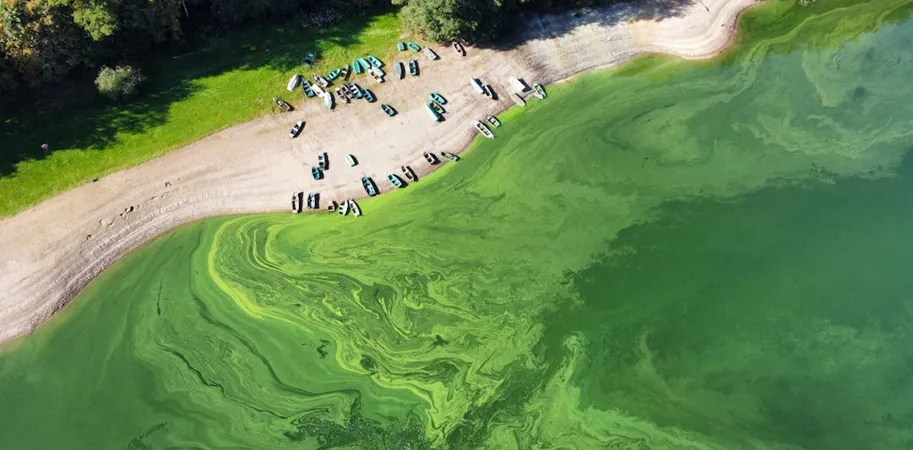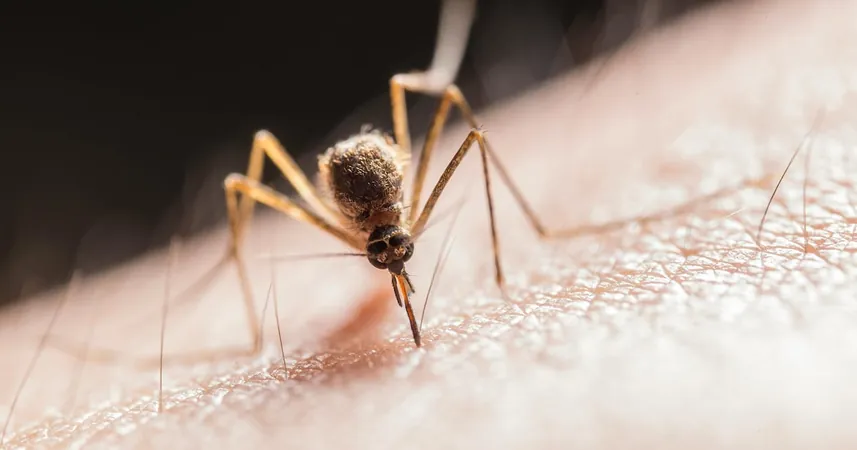
Luxembourg's Secret Weapon Against Waterborne Microbes: A High-Tech Monitoring Network
2025-09-17
Author: Emily
When it comes to water safety, microbes can be silent invaders, some carrying diseases that threaten public health. Luxembourg is tackling this invisible menace head-on with innovative technology that continuously monitors the water supply, ensuring the safety of its citizens.
The Challenge of Microbial Monitoring
Tracking microbes in water is no easy feat. Their distribution can vary dramatically over time and space, making traditional monitoring methods—typically involving sporadic sampling—ineffective. Contamination events can happen suddenly and the levels of harmful microbes can be incredibly low, eluding detection without advanced, sensitive methods.
Continuous Monitoring for a Safer Future
Recognizing the urgent need for swift detection, Luxembourg has pioneered initiatives like Microbs and Cyanowatch. These groundbreaking online monitoring programs are designed to spot potential outbreaks before they escalate, safeguarding public health effectively and proactively.
A Living Laboratory for Water Safety
Luxembourg operates as a living laboratory in collaboration with local authorities. Teams from the Luxembourg Institute of Science and Technology (LIST) are devising methods to protect swimmers from toxic bacteria and minimizing risks during viral outbreaks like the COVID-19 pandemic.
A Comprehensive Water Cycle Vigilance
Water flows from natural sources through treatment plants and extensive distribution networks before eventually returning to the environment. Throughout this cycle, specialized observatories equipped with advanced sampling and measurement tools continuously monitor microbial hazards, allowing for rapid assessment and immediate action when necessary.
The Global Threat of Microbes
As the world faces challenges such as climate change and biodiversity loss, the potential for microbial threats grows. Toxic blue-green algae blooms, fueled by nutrient pollution from agricultural runoff, can lead to severe consequences for ecosystems and human health, costing millions annually.
Innovative Surveillance Systems in Action
At Haute-Sûre reservoir, a key recreation and drinking water source, automated monitoring systems detect cyanobacteria blooms in real-time. With hourly imagery and sensor buoys, authorities can respond swiftly, issuing bathing bans or reopening safe zones as needed.
Cutting-Edge Technology for Public Health
A new observatory is now monitoring bacteria in drinking water, with sensors transmitting near real-time data to flag changes in water quality. This proactive management is crucial for ensuring a continuous supply of safe drinking water.
Wastewater Watch: Early Detection of Viruses
Microbs, an innovative wastewater observatory, monitors 13 treatment plants for viruses like SARS-CoV-2 and influenza. By independently collecting and analyzing samples, it provides a timely warning of viral outbreaks, often before symptoms appear in the community. During the COVID-19 pandemic, its data proved to be as vital as hospital records.
Empowering Citizens in Water Safety
In an effort to engage the public, Luxembourg has introduced a citizen-based observatory. Partnering with UK scientists, residents can report cyanobacteria blooms via an app called Bloomin' Algae, allowing experts to verify sightings and update a public safety map.
As climate change and urbanization threaten water resources, the combination of high-tech monitoring and community involvement is a powerful approach to ensuring safe drinking water and protecting public health swiftly.









 Brasil (PT)
Brasil (PT)
 Canada (EN)
Canada (EN)
 Chile (ES)
Chile (ES)
 Česko (CS)
Česko (CS)
 대한민국 (KO)
대한민국 (KO)
 España (ES)
España (ES)
 France (FR)
France (FR)
 Hong Kong (EN)
Hong Kong (EN)
 Italia (IT)
Italia (IT)
 日本 (JA)
日本 (JA)
 Magyarország (HU)
Magyarország (HU)
 Norge (NO)
Norge (NO)
 Polska (PL)
Polska (PL)
 Schweiz (DE)
Schweiz (DE)
 Singapore (EN)
Singapore (EN)
 Sverige (SV)
Sverige (SV)
 Suomi (FI)
Suomi (FI)
 Türkiye (TR)
Türkiye (TR)
 الإمارات العربية المتحدة (AR)
الإمارات العربية المتحدة (AR)